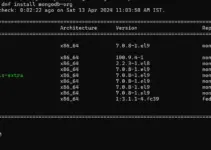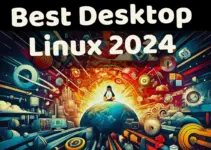The Linux kernel (developed by Linus Torvalds) is a basic fundamental component of the operating system. It is responsible for managing all the essential hardware and software components by acting as a bridge between them, hence without it we cannot have Linux-based systems. But do you know Linux kernel also has various releases that signify how well stable it is to use for some crucial projects…
In this article, we’ll discuss what makes the Mainline kernel, Stable kernel, and Long term kernel versions different from each other in Linux.
Mainline Kernel
The Mainline kernel is a freshly released and under-development version of the Linux kernel. It offers up-to-date features and improvements. The release period of the new Mainline kernel is after every 2 or 3 months.
Mainline Linux Kernel as its name suggests, is the stage where most of the new features and improvements are introduced by the developers to the Kernel. But being the first public release, all bugs would not have been fixed, since it was made available. Hence, users who install the Mainline kernel on their systems may find stability and performance issues.
Also, that is the reason why users should avoid using the Mainline branch kernel in their production Linux server operating systems. Nevertheless, you can install the Mainline kernel on your local system to experience its new improvements and additions before getting officially on your Linux OS.
Thus, this kernel should only be used if the feature set it provides is necessary.
Stable Kernel
The Stable kernel refers to versions of the Linux kernel that has undergone vigorous testing and patching. As compared to Mainline, it includes bug fixes, security updates, features from previous versions, and new additions which are deemed stable enough for general use by many users.
Hence, Stable Kernel provides users a safe option of Kernel to install on their production systems and to access some new technology or features before officially becoming available in their favorite Linux distro (like Ubuntu).
So, keep your Linux system up-to-date by installing a Stable kernel. As bug fixes from the mainline kernel tree are backported and periodically made available through it, usually on a weekly basis to ensure the smooth running of the Linux system.
Longterm Kernel
As the name of this Kenrel suggests, it is supported for the Long-Term by backporting the important bug fixes to the older version of the mainline release. Hence, the Long-term supported Kernel includes earlier supported versions of the mainline series but is extremely stable and bug-free, however, from time to time, patches are supplied if some vulnerability is detected by the developers.
The main reason to keep LTS kernels around even long after their initial release dates is to provide support for older hardware or system configurations that work best with certain older versions of software packages or drivers.
But Long term support and rigid stability come at the cost of fewer features as compared to the newer versions of Kernel. Nevertheless, they tend to have longer support timeframes so they can be used on critical servers without having to worry about potential security issues due to an outdated version of programs being run without updates applied.
In conclusion, understanding the differences between these three types of Linux kernel releases can help you make an informed decision when it comes to choosing one for your specific needs in a Linux environment – whether that requires cutting-edge features yet to be released in stable releases or well-tested versions best used in production environments along with support for legacy hardware or technologies later generations lack support for.





